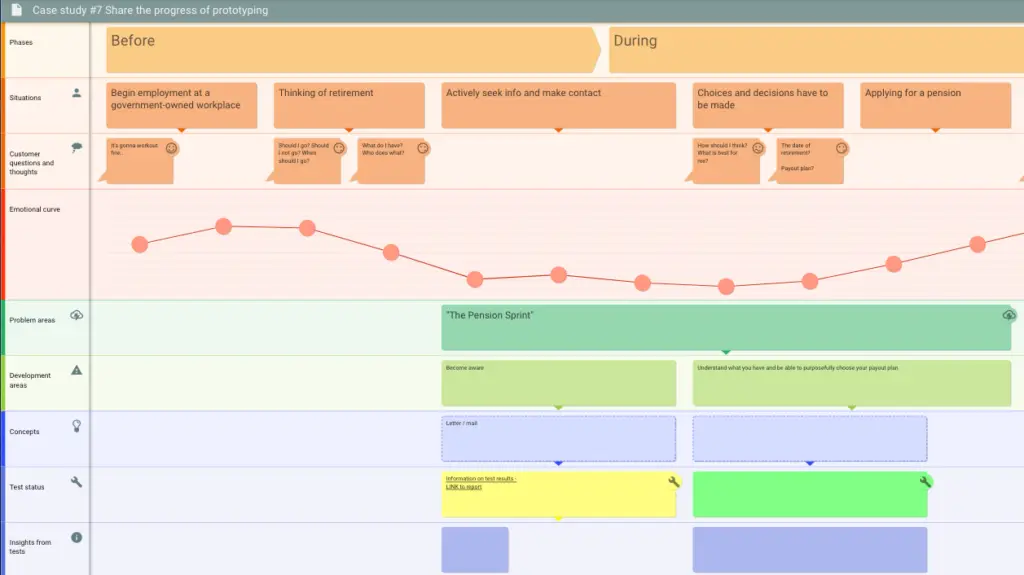Journey maps are powerful for communicating the customer experience to your internal stakeholders. But to get management and people from different departments onboard, you need them to understand and accept the rationale behind your insights, conclusions, and ideas. For improvements derived from the customer journey map themes.
Most often – and for natural reasons, we read the customer journey map horizontally and visualize how the customers move through your service and the steps they are taking. But equally important is to structure your journey map in a way that makes it easy to read in a vertical way. This helps in highlighting different customer journey map themes.

Click here to explore the journey map template used for this case
The key take-away in this case is to make sure to connect the insights to the conclusion (pain points and problem areas). All the way to the solutions, tests, and the changes that you want to implement, based on different customer journey map themes.
In effect, you are then creating logical paths. This not only goes from left to right in the map but also top-down, starting with the customer perspective. It will enable you to communicate the customer journey better. Helping your team to understand why you have arrived at the key issues, pain points, and solutions that you’ll want to take action on. Understanding different customer journey map themes will help in this process.
Create a story from your customer journey map, where you describe important insights and explain why the solution ideas and concepts were created. Create a customer journey map theme, using colors and icons for the status and progress of the ideas or solutions you are testing.
If you want to learn more about how to create a journey map, check out this step-by-step guide.
By Sabina Persson


